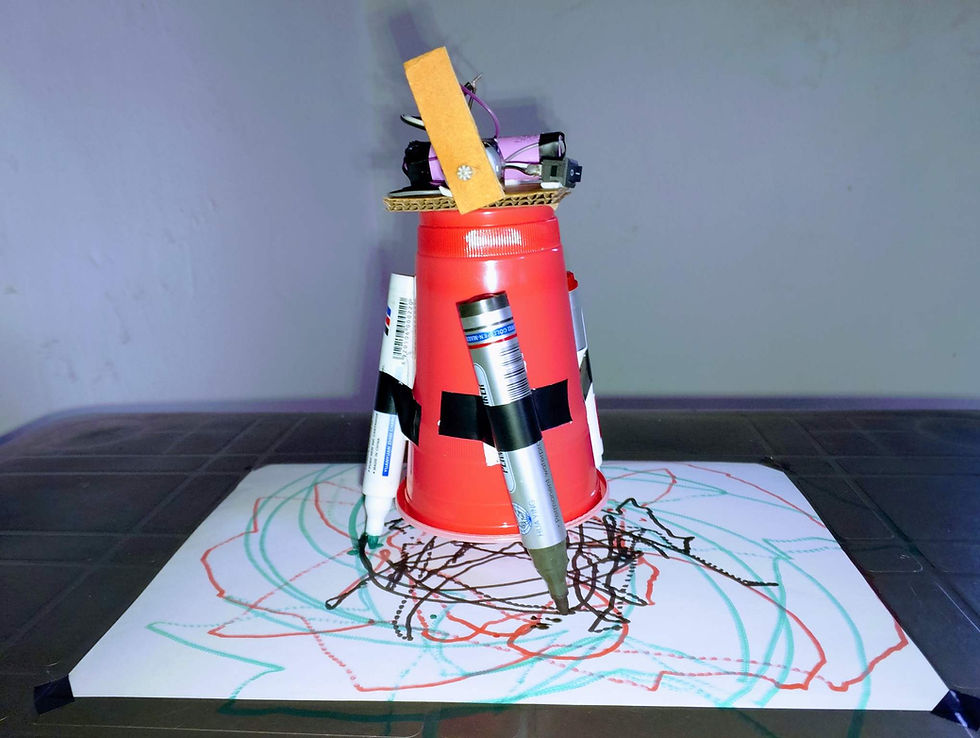Easy Kids Science Experiment: How to Make a Rain Gauge in 30 Minutes.
- jude nkereuwem

- Mar 21, 2023
- 3 min read

Introduction
Hello!! Welcome to Makersgeneration.
We are your go-to source for all things related to Science projects for kids; from basic to intermediate and advanced levels. We are dedicated to providing information and insightful content on how to make cool science stuff with household items.
In today's tutorial, we will learn how to make a rain gauge that we can use to measure the amount of rainfall in our area using a plastic bottle and ruler. This cool STEM project will show us how weather forecasters predict if the rain is coming or not.
Measuring the amount of rainfall with rain gauge
Measurement is a very important practice in science. We measure to know the size of an object, the amount of a substance, or the time taken to carry out a particular task. See, measurement is very important.
A rain gauge can be defined simply as an instrument used to gather and measure the amount of liquid precipitation over a predefined area.
Meteorologists or weather forecasters measure and compare rainfall over time to find patterns in weather. With the help of weekly, monthly, and yearly records, they can predict when there might be heavy rain, or if a drought is on the way - vital information for farmers and gardeners. A good way to create a weather experiment for kids.

A rain gauge (iStock)
Materials required
Large plastic bottle
Coloring pen
Card stock
Scissors
Tape
Ruler

Assembling our rain gauge
Let us take a look at the simple steps required to set up our rain gauge.
Step 1
Towards the neck of the plastic bottle, draw a straight line around the bottle with your coloring pen. Wrap the card stock around the bottle, to help make your line straight.

Step 2
Cut along the line drawn in step 1 with scissors, then separate the bottle into two parts. (you can ask an adult to assist you with this step)

Step 3
Wrap tape neatly around the cut edges of the two bottle parts, leaving enough to fold over. This will cover up any uneven cutting and sharp edges.

Step 4
I assume the bottom of your bottle is not flat. So, draw a straight line around the bottle towards the bottom, where the diameter of the bottle starts to get even (just as we did earlier) This will act as our base for our rainwater measurement.

Step 5
Now, attach the ruler to the outside of the bottle with tape, and make sure the zero mark at the end of the ruler lines up with the baseline previously drawn.

Step 6
Fill the bottle with water up to the baseline; this will give your bottle a reference flat base and also weigh down your rain gauge so it doesn't fall over.

Step 7
Put the funnel part upside down inside the other part of the bottle, then place your rain gauge outside on a flat surface, away from obstacles like buildings or trees. After the next rain, go outside to check the increase in water level from the baseline and make note of how much rain has fallen

Hopefully, with the records we'll get from our new rain gauge, we will now be able to predict when the rain will fall in our area, so we know when we'll be going outside to play. Yayyyy!!!
Other cute things to make and hand-crafts for kids
If you are looking for more tiny crafts and stuff to do with your kids, take a look at these other activities:
Newsletter, follow, subscribe, and like the social media
If you like STEM challenges, consider following us on Social media for the latest updates, and don't miss any STEM events. Don't forget to also subscribe to our newsletter at the bottom of our website ''www.makersgeneration.net'' for more events, tutorials, and freebies.
Stay tuned for the coming online STEM activities for your children. It will go from coding (python, Scratch, etc) to robotics, 3D design. Make video games and much more. So subscribe to the newsletter to not miss a piece of it. ;-)
Subscribe to the Facebook group if you have yet registered. Content and tutorials are shared daily: Create and build STEM projects for kids
We can be reached at: contact@makersgeneration.net if any questions.
See you soon.




























Comments